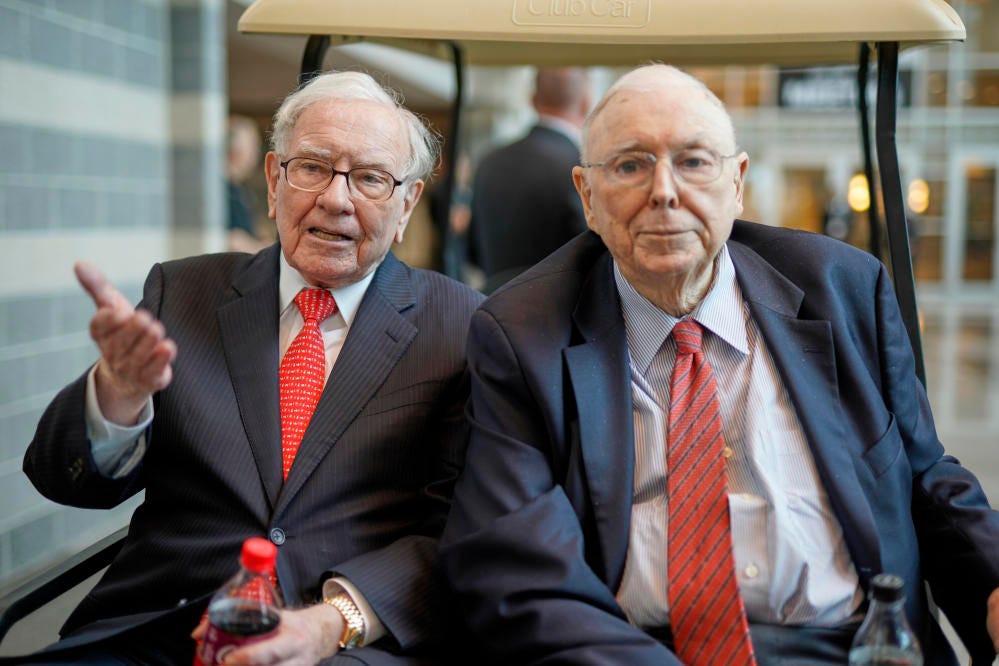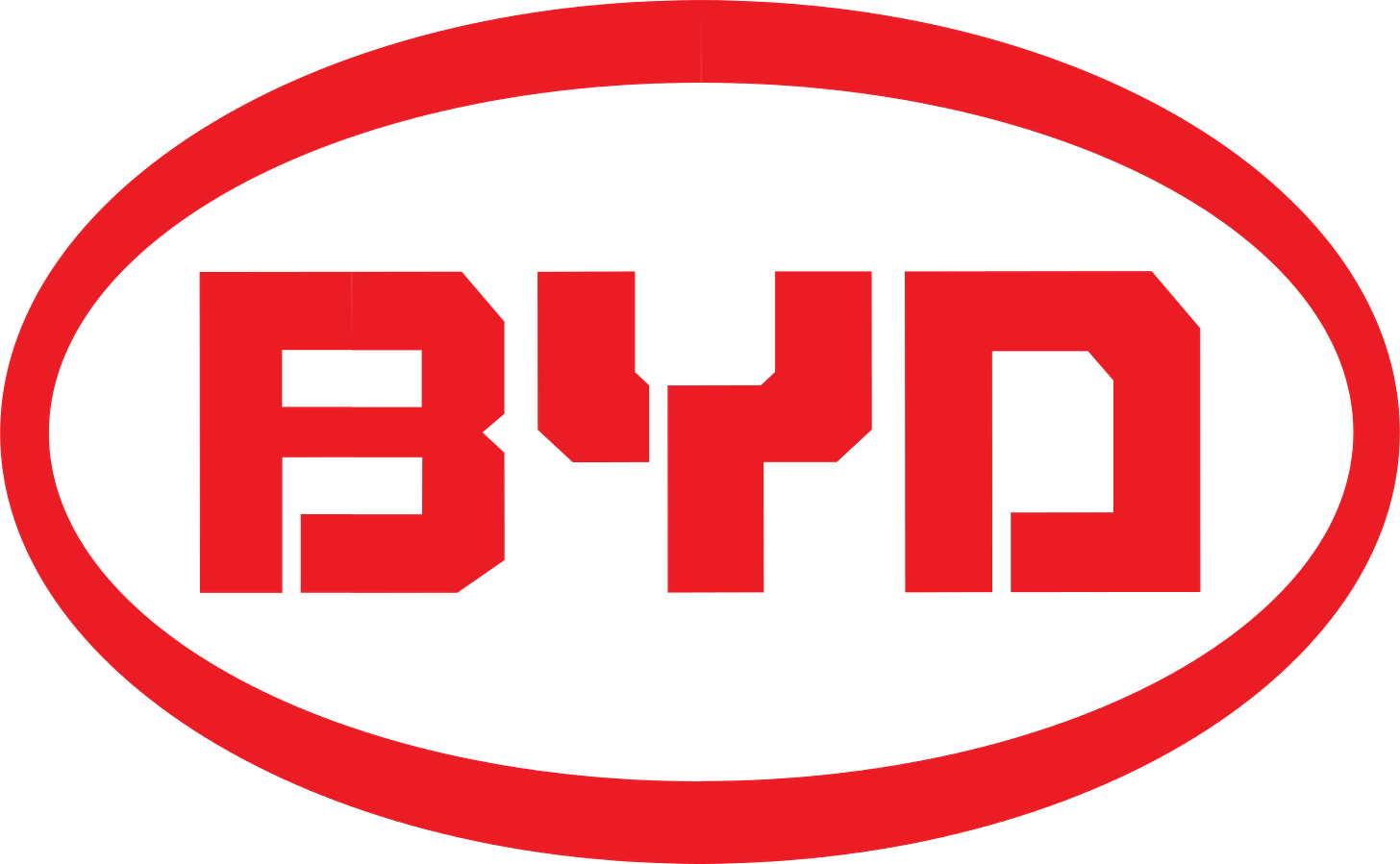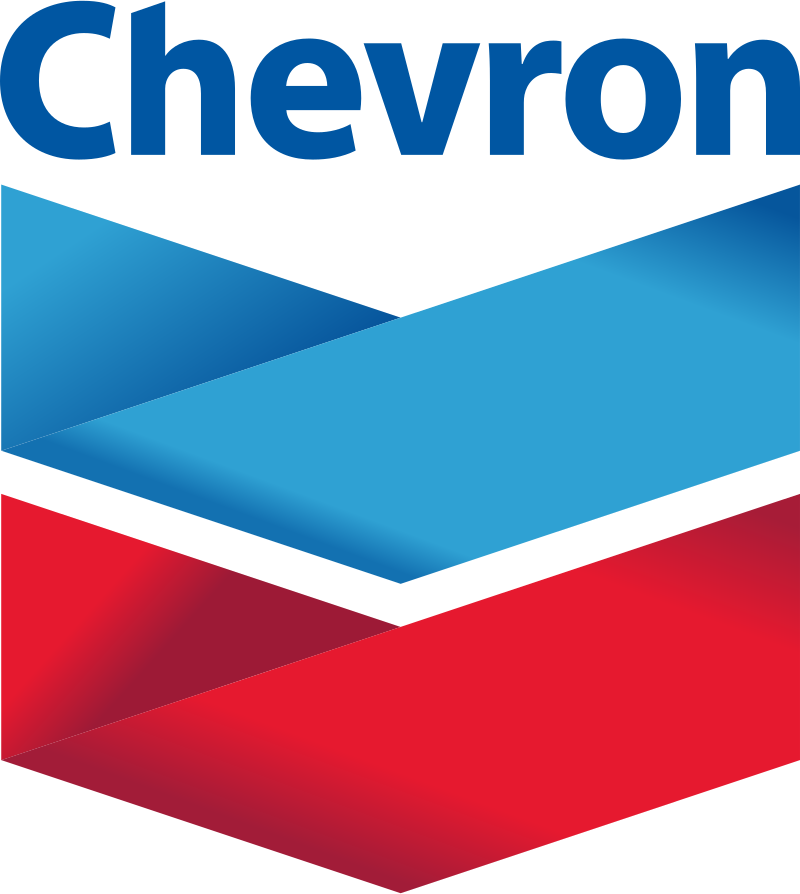The 8 Stocks That Make Up 80% of Berkshire Hathaway
Why did Warren Buffett concentrate so much of his portfolio in these companies?
Note: All figures are accurate for July 8, 2022 at market close.
Berkshire Hathaway is arguably one of the largest investment vehicles in the world. With total assets of $969.5 billion, a market cap of $620 billion and common stock holdings worth $329 billion, Berkshire is over double the size of the largest actively managed mutual fund in the world (the Growth Fund of America). Yet while many mutual funds hold dozens or hundreds of stocks, Berkshire takes a different strategy: concentrating its investments in a few great companies and holding them for the long term. Just two companies make up over half of Berkshire’s portfolio, and eight companies make up 80%. Each of these eight companies reflects Warren Buffett and Charlie Munger’s investing philosophy, and makes a useful case study for investors who want to maximize their returns.
8. BYD (2.8%)
Currently, Berkshire Hathaway holds a 7.7% stake in Chinese conglomerate manufacturer BYD, at a value of $9.29 billion.
The incredible story of BYD starts with its founder. Wang Chuanfu was born to a family of farmers in one of China’s poorest provinces in 1966, the midst of the Cultural Revolution. Orphaned as a teenager, he had to be raised by his older siblings. Determined to make something of himself, he graduated from both university and graduate school with degrees in chemistry. Wang spent several years as a government researcher, but changed his path in 1995 when he noticed that rechargeable batteries had to be imported from Japan at a high cost. To address this, he moved to the fledgling startup city of Shenzhen, raised $300,000 from friends and family, and began manufacturing batteries.
BYD’s success was impressive: By 2000, the company was one of the largest cell phone battery manufacturers in the world, and soon expanded to manufacturing mobile phone parts and assembling handsets for companies such as Nokia and Motorola. In 2003, BYD bought a nearly defunct state-owned car company, and used it to found the wholly owned subsidiary BYD Auto. With the ability to make cars both cheaper and with longer-lasting batteries than competitors, BYD soon became one of China’s largest automakers.
In 2008, at the behest of Charlie Munger, Berkshire purchased 10% of the company for $232 million. Why would Buffett, a technology-averse, America-centric investor, buy stock in an electrical/automotive company on the other side of the globe? Two reasons:
Buffett and Munger admire the vision and capabilities of CEO Wang Chuanfu. Munger once said “This guy is a combination of Thomas Edison and Jack Welch—something like Edison in solving technical problems, and something like Welch in getting done what he needs to do. I have never seen anything like it.” Buffett and Munger frequently stress the importance of outstanding management, and Wang Chuanfu is an excellent example.
BYD has a competitive advantage and immense growth opportunities. BYD is highly vertically integrated and has access to cheap labor, contributing to its ability to manufacture cars inexpensively. China also has a rapidly growing EV industry. In 2008, fewer than 3,000 electric vehicles were sold in China. In 2021, that number increased to 2.9 million, making China the largest EV market in the world—and BYD the world’s largest EV manufacturer.
As for Berkshire, the BYD investment has paid off handsomely: returning nearly 40X.
7. Occidental Petroleum (3.2%)
Currently, Berkshire Hathaway holds an 18.7% stake in Occidental Petroleum, at a value of $10.64 billion.
Berkshire Hathaway is no stranger to energy companies, owning many of them through subsidiary Berkshire Hathaway Energy. One such deal was with Occidental Petroleum, commonly known as Oxy. In 2019, Berkshire provided $10 billion to the company in order to purchase Anadarko Petroleum, making Oxy the largest oil producer in the Permian Basin (America’s largest oil basin). In exchange, Berkshire received $10 billion in preferred stock paying an 8% dividend, as well as warrants to buy 83.9 million common shares at $59.62 a share. In March 2022, Buffett began purchasing huge amounts of Oxy stock, and shows no sign of slowing down. Why would Buffett buy a commodity business such as an oil company without the potential for much competitive advantage, especially one whose stock had surged 450% since March 2020?
Buffett believes oil and gas stocks are undervalued. With the rise of ESG investing (environmental, social, and governance) that eschews fossil fuels, as well as the lack of investment in recent years by oil drilling companies (due to low oil prices), prices of oil and gas exploration stocks are far lower today than in 2014 (the last time oil was above $100 a barrel).
Buffett is betting on higher oil prices (and higher stock prices). With the increase in demand for oil after COVID, as well as the Russian invasion of Ukraine, oil prices have increased significantly since 2020. With troubled international supply chains, Buffett believes both that oil prices will rise (or remain high) and that domestic oil production will increase, two factors that would benefit Oxy.
Buffett admires the goals of Oxy’s management. In Oxy’s Q4 2021 earnings call, CEO Vicki Hollub highlighted her desire to generate sustainable free cash flows by increasing operational improvements and production. The cash flows would be used to repay debt, increase the company’s dividend, and repurchase shares, all activities that Buffett applauds.
6. Kraft Heinz (3.8%)
Currently, Berkshire Hathaway holds a 26.6% stake in Kraft Heinz, at a value of $12.49 billion.
Berkshire Hathaway is well-known for loving businesses with strong brands and plenty of cash on hand. When Buffett was given the chance to help Brazilian private-equity giant 3G Capital buy a large stake in the H.J. Heinz Company in 2013, he pounced, providing $12.12 billion in exchange for Heinz stock. In 2015, Heinz merged with Kraft Foods, and Berkshire spent another $5 billion to contribute to a special cash dividend for Kraft shareholders. The new company now controlled beloved brands, including Jell-O, Oscar Meyer, Velveeta, Lunchables, Maxwell House, Capri Sun, and more, with a market cap of nearly $110 billion. Yet despite the seemingly strong position of Kraft Heinz, Berkshire has lost money on the deal. Why?
One main reason: The new company prioritized cost-cutting over innovation. Buffett has historically criticized private-equity deals for their quick turnaround and lack of long-term owner orientation, yet invested with 3G anyway. With 3G essentially running Kraft Heinz, their priority became cutting costs. Among other things, Kraft Heinz switched to zero-based budgeting, meaning they would create an entirely new budget every year rather than adjusting the existing one. While consumer tastes change to prioritize healthier and more sustainable options, Kraft Heinz lagged behind competitors.
Kraft Heinz’s problems came to a head in 2019. Earnings fell by half, and the company took a $15 billion write-down on its Kraft and Oscar Meyer brands and was subpoenaed by the SEC, causing the CEO to resign and the stock to tumble. Warren Buffett publicly admitted his mistake with Kraft Heinz, stating that he overpaid for the Kraft part of the company.
Yet not all hope is lost. The new CEO, Miguel Patricio, has committed to increasing the company’s innovation, selling unprofitable brands to pay down debt, and following the company’s new promise: “to sustainably grow by delighting more customers globally”. Since Patricio’s tenure began, shares of Kraft Heinz have increased, slowly but surely, by around 24%. More so than anything else, Berkshire’s experience with Kraft Heinz demonstrates Buffett’s willingness to stay the course: refusing to sell a struggling business with a strong brand.
5. American Express (6.5%)
Currently, Berkshire Hathaway holds a 20.1% stake in American Express, at a value of $21.49 billion.
Warren Buffett’s relationship with American Express goes back many years, as does the history of American Express itself. Amex was founded in 1850 in Buffalo, New York as an express mail service. In 1857, it expanded to financial services by launching a money order business to compete with the USPS. In 1891, J.C. Fargo, the President of American Express, took a trip to Europe, where he found it frustratingly difficult to use credit to obtain cash. Upon returning home, he launched the famous Amex Traveler’s Cheque to help travelers pay for goods, making American Express one of the most respected financial services companies in the world. Over time, Amex expanded into credit cards and banking.
In 1963, Amex, along with many other financial companies, lent $180 million ($1.74 billion today) to a soybean oil businessman named Anthony “Tino” De Angelis. Unfortunately, De Angelis was a fraud, and the scandal caused Amex to suffer huge losses, tanking its stock price more than 50%. Warren Buffett, then the 32-year-old head of Buffett Partnership, put 40% of his firm’s assets into the company. Not only did this episode demonstrate Buffett’s willingness to, as he puts it, “be greedy when others are fearful”, but also netted him a huge profit.
Starting in the 1980s, American Express decided to pivot into a full-service financial megacorporation, acquiring (among others) securities firm Shearson Loeb Rhoades, investment bank and trading firm Lehman Brothers Kuhn Loeb, financial services firm Investors Diversified Services, the Trade Development Bank, and brokerage firm E.F. Hutton and Co. While Amex stock doubled between 1981 and 1983, it remained virtually flat for the next ten years. In 1991, insurer First Capital, which Amex held a 28% stake in, went insolvent and was seized by the state insurance commissioner, sending Amex’s stock tumbling. Berkshire saw the opportunity and pounced, buying $300 million in preferred stock, and spending another $1 billion over the next seven years.
Once again, the main reason Buffett bought American Express, both in 1963 and the 1990s, was the strength of the brand and business model. With Amex’s universally recognizable credit cards, high merchant fees, strong cash flow, and loyal customer base, Buffett believed the fundamentals of the business could withstand short-term vicissitudes. Once again, he was right. In 1993, Harvey Golub became CEO and sold off all of Amex’s investment banking and institutional businesses within two years. While many of Amex’s former financial holdings failed (including the spectacular explosion of Lehman Brothers in 2008), Amex prospered: netting Berkshire over $20 billion in unrealized gains.
4. Chevron (6.9%)
Currently, Berkshire Hathaway holds an 8.1% stake in Chevron, at a value of $22.73 billion.
Like American Express, Chevron is a company that has been around for a long time. Its origins can be traced back to Star Oil, a company that discovered oil in California’s Santa Susana Mountains in 1876, and was able to drill 25 barrels a day. Nowadays, Chevron produces 1.8 million barrels a day, nearly half of which are produced domestically. In many ways, Berkshire’s Chevron acquisition is similar to its Oxy purchases: a bet on rising oil prices, increased domestic oil production, and oil companies returning money to shareholders. Also like Oxy, Chevron is one of Berkshire’s newest investments: Berkshire began purchasing in Q3 of 2020 and rapidly increased its buying in 2022. While Berkshire has overall slightly lost money on Chevron, the future of the investment remains to be seen.
3. Coca-Cola (7.7%)
Currently, Berkshire Hathaway holds a 9.2% stake in Coca-Cola, at a value of $25.26 billion.
The Coca-Cola Company is one of Berkshire’s most iconic and well-known holdings. Fittingly, Coca-Cola has an iconic and well-known history. In 1886, pharmacist John Pemberton created a non-alcoholic, sweetened, caffeinated, carbonated beverage flavored with coca leaves and kola nuts that he sold as a headache cure in his Columbus, Georgia drugstore. His bookkeeper, Frank Robinson, designed the now world-famous logo and name. The rest is history: in 1892, the formula and brand were purchased by businessman Asa Candler, and within three years, the newly founded Coca-Cola Company was operating in every state in America.
In 1985, Coca-Cola committed one of the greatest mistakes in business history: they changed their iconic formula. So-called “New Coke” was a disaster. Nearly universally hated by the public, Coca-Cola restored the original formula less than three months later. Two years after the New Coke debacle, the stock market crashed, bringing Coca-Cola down with it. Once again, Berkshire pounced: spending $1.3 billion, by far its largest investment ever up to that point. So far, the investment has multiplied twenty-fold. Once again, how did Berkshire know to buy Coca-Cola?
Coca-Cola’s brand is virtually invincible. Coca-Cola has consistently ranked as one of the most recognizable, most valuable, and most chosen brands in the world for decades. Both the name and logo are strongly protected trademarks, and the formula is a closely guarded trade secret.
Coca-Cola has an extremely well-designed formula. The sugar in Coke makes it taste delicious, the caffeine gives energy, the proprietary blend of flavorings makes it unique, and the color and carbonation make it appear upscale.
Coca-Cola has mastered marketing. Coca-Cola spends over 10% of its revenue on marketing, and uses Pavlovian association, rather than selling, to market—associating itself with happiness, prosperity, familial love, and other highly desirable ideals.
Today, Coca-Cola holds over 20% of the global soft drink market share, and over 40% of the US market share—roughly twice as much as Pepsi’s. Over 1.9 billion servings of Coke products are consumed daily around the globe. Even with serious competition from Pepsi and others, even with paying out billions of dollars a year in dividends, even after giving away most of their bottling rights to franchisees, Coca-Cola has still managed to grow from being worth $2,300 in 1892 to $25 million in 1919 to $10.6 billion in 1988 to $274 billion today, making it one of the most successful businesses in world history.
2. Bank of America (10.0%)
Currently, Berkshire Hathaway holds a 12.8% stake in Bank of America, at a value of $32.83 billion.
The Bank of America is one of Buffett’s most interesting holdings. Not only does it make up a full 10% of Berkshire’s common stock portfolio, but it’s now Berkshire’s only major bank holding after selling huge positions in JPMorgan Chase, Goldman Sachs, Wells Fargo, and PNC Financial. There’s one main reason Berkshire decided to buy Bank of America in the first place:
Banks have a strong business model. Depositors provide banks with large amounts of capital in exchange for protection and a low interest rate. Banks take most of the capital and lend it out at higher interest rates, profiting massively off the spread. People will always need a safe place to put their money, individuals and institutions will always need sources to borrow capital, and banks are so vital to the financial system that they will often be bailed out by governments to avoid failing. This model works out well: Bank of America has a return on equity of nearly 11%, and a 30% net profit margin.
A quick caveat: If banks are so great, why did Berkshire sell out of most of them in 2020? The main reason appears to be risk management. Buffett believed Berkshire was overexposed to the banking sector and didn’t want to see severe negative results if the pandemic worsened, so he sold. Why, then, did Berkshire keep Bank of America?
It isn’t entirely clear. Some proposed reasons include that Bank of America keeps more capital on hand to cover loan losses than most other banks, has a safe dividend, trades at a low price to book value ratio, is sensitive to interest rate increases, and that CEO Brian Moynihan has helped make the bank more efficient and responsible with lending. Buffett also bought in cheap, both during the US sovereign-debt crisis of 2011 and the COVID-19 pandemic of 2020. Regardless of his reasoning, Buffett has once again made a fortune: $18.2 billion in unrealized capital gains.
1. Apple (40.7%)
Currently, Berkshire Hathaway holds a 5.6% stake in Apple, at a value of $134 billion.
Those who know a little about Warren Buffett may be surprised that his largest holding by far is a technology company. Those who know a lot about Warren Buffett will not. Apple is, to put it simply, a fantastic company with incredible branding, customer loyalty, financial strength, and growth prospects. Yet while today Apple, with its nearly $2.4 trillion market cap, is well known for being great, it wasn’t always seen that way. As recently as 2016, Apple stock was suffering. The company had seen its first-ever iPhone sales decline, as the iPhone 6S failed to meet expectations. In addition, Apple’s reliance on China turned off many investors as US-China tensions began to rise. Combined with a lower-than-expected earnings report, Apple stock sank around 33% to just $22 a share, its lowest level since June 2014. Once again, Berkshire proved its willingness to be greedy when others are fearful: snapping up over 911 million shares over the course of the next few years. Why?
Apple has an extremely strong product portfolio with an extremely loyal customer base. Apple’s main products: the iPhone, iPad, and Mac, are designed to work together seamlessly. Its operating systems, iOS and MacOS, are proprietary and have exclusive features, such as FaceTime and iMessage, that incentivize users to continue buying and owning Apple products. This strategy pays off: Apple is ranked the most valuable brand in the world by Interbrand and the most loved brand in the world by the American Customer Satisfaction Index. The iPhone has an unbelievable brand loyalty (defined as the percent of customers who buy a new phone of the same brand) of 92%, compared to just 74% for Samsung and 65.2% for Google. 52.5% of Apple’s net sales come from the iPhone alone, and in Q1 2022, Apple shipped more phones to customers than every other smartphone company in the US—combined.
Apple has very strong finances and a willingness to distribute rewards to shareholders. Apple made $94.68 billion in net earnings in 2021, more than any other company in the world (except Saudi Aramco), and nearly double that of 2019 (pre-COVID). Apple’s net profit margin is 26%, compared to the industry average of 15.46%. It sits on a massive pile of $192.7 billion of cash, cash equivalents, and marketable securities, even after distributing much of its cash flow to shareholders—spending $85.5 billion on share repurchases and $14.5 billion on dividends in 2021 alone. In addition, when Berkshire bought Apple for the first time in 2016, it was trading at just 11 times earnings: a far cry from the 29.7 P/E ratio of the average tech company today.
Apple has excellent future growth prospects. As a constantly innovating technology company, Apple is constantly developing new products and services. In the last 5 years alone, Apple has released the AirTag wireless tracker, HomePod smart speaker, Apple Card credit card, Apple TV+ streaming service, and Apple One subscription bundle. This strategy has paid off: sales from products and services other than the iPhone, iPad, and Mac now make up around 30% of Apple’s net sales, up from 16.5% in 2016. In addition, Apple is quickly growing in emerging markets, especially China, where it has double the market share it did just five years ago.
As for Berkshire shareholders? The company’s shrewd move has made them over $100 billion in unrealized gains—by far its largest gain ever.
Conclusion
By now, you should have picked up a few patterns in Buffett’s style: both in his individual investments and his overall portfolio management. Here are a few important ones to note:
Berkshire loves to buy great companies when they’re going through a short-term struggle. Buffett bought Apple during its problems in 2016, Bank of America during the 2011 US sovereign-debt crisis, Coca-Cola after the New Coke debacle and 1987 stock market crash, and American Express as they wrapped up their failed financial ventures in the early 90s. Short-term problems, whether unique to the business or in the overall macro environment, may lower a stock price to attractive levels, without harming the underlying strength of the company.
Berkshire loves companies with a strong brand and sticky customer base. Brands motivate customers to keep buying, guarding a business against competition and economic downturns. Apple, Coca-Cola, American Express, and Kraft Heinz are all great examples. In some cases, Berkshire loves these companies so much that it buys them outright (such as See’s Candies, Borsheim’s Fine Jewelry, Dairy Queen, and Nebraska Furniture Mart).
Berkshire loves companies that have great financials and management that distributes rewards to shareholders. Buffett prefers companies with high profit margins, lots of cash on hand, not much debt, and a high return on invested capital. The management should be rational and focus on rewarding the shareholders rather than themselves, ideally in the form of share repurchases, dividends, and paying down debt. Examples of this are Apple (again!), Occidental Petroleum, and Bank of America.
If you want to boost your long-term investing returns or just be able to think more clearly about investing, there’s no better way to start than by studying the purchases of the world’s greatest investor.










Very interesting. What about Geico? My understanding is that much of the money used in BH investments is the “float” from insurance policies